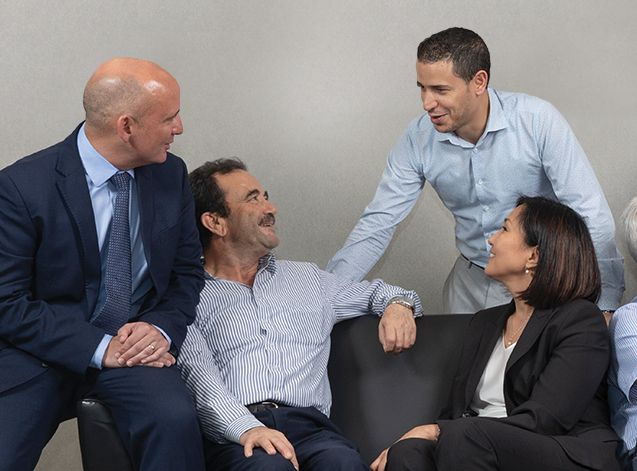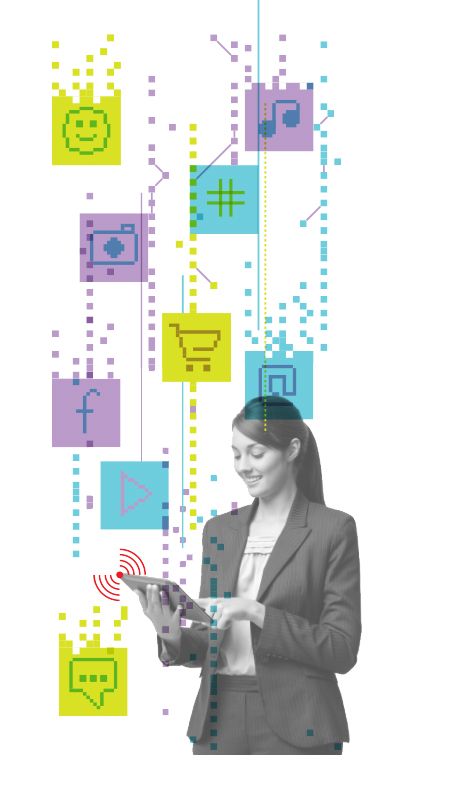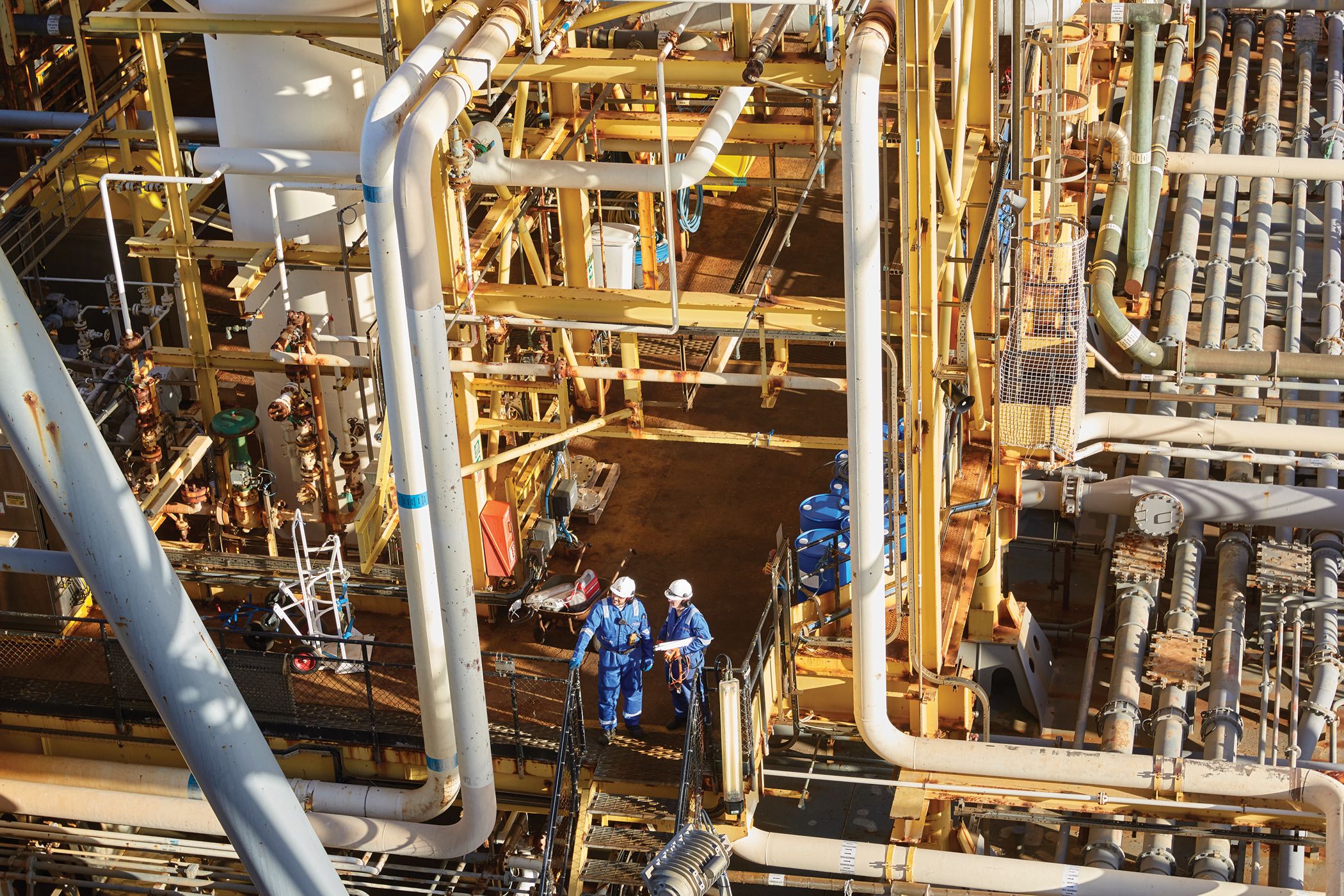
The future is digital
A range of technologies look set to increase efficiencies and reduce the operating costs of late life assets
HOW WE WORK
Sitting immersed in Petrofac’s state-of-the-art Innovation Zone in Aberdeen, there’s no doubt the future is digital. The journey towards this point has been decisive; the potential vast. As Oil and Gas UK builds momentum and rallies the industry to set its sights firmly on 2035, with a goal of extending the UK oil and gas basin for another generation, Petrofac’s timing couldn’t be better.
Technology is set to play a vital role with late life assets, increasing efficiencies and reducing operating costs. The endgame? To transform how the industry works and maximise economic recovery.
Operations Director Sandy Mersonis remodelling how Petrofac deploys its pioneering Duty Holder model and says it’s vital to move with the times: “I think we’re improving from the downturn. Everyone is speaking of green shoots coming through. People are thinking differently about their assets, how to look after and maintain them, particularly those assets that aren’t getting any younger.”
Many of Petrofac’s digital technologies came into play in the last 18 months, but Sandy believes the long-term benefits are huge. “It’s like a car; if you continue maintaining that car the same way as you did on day one, after 10 years it’s going to break down a lot.
“A10-year-old car can now have DAB radio and GPS. People want the things that weren’t there when the car was first built, and the same applies in oil and gas. Clients are coming to us because they want to see innovation and best practice. The changes we make now can hopefully secure the basin for another generation.”
PUBLISHED SEPTEMBER 2019
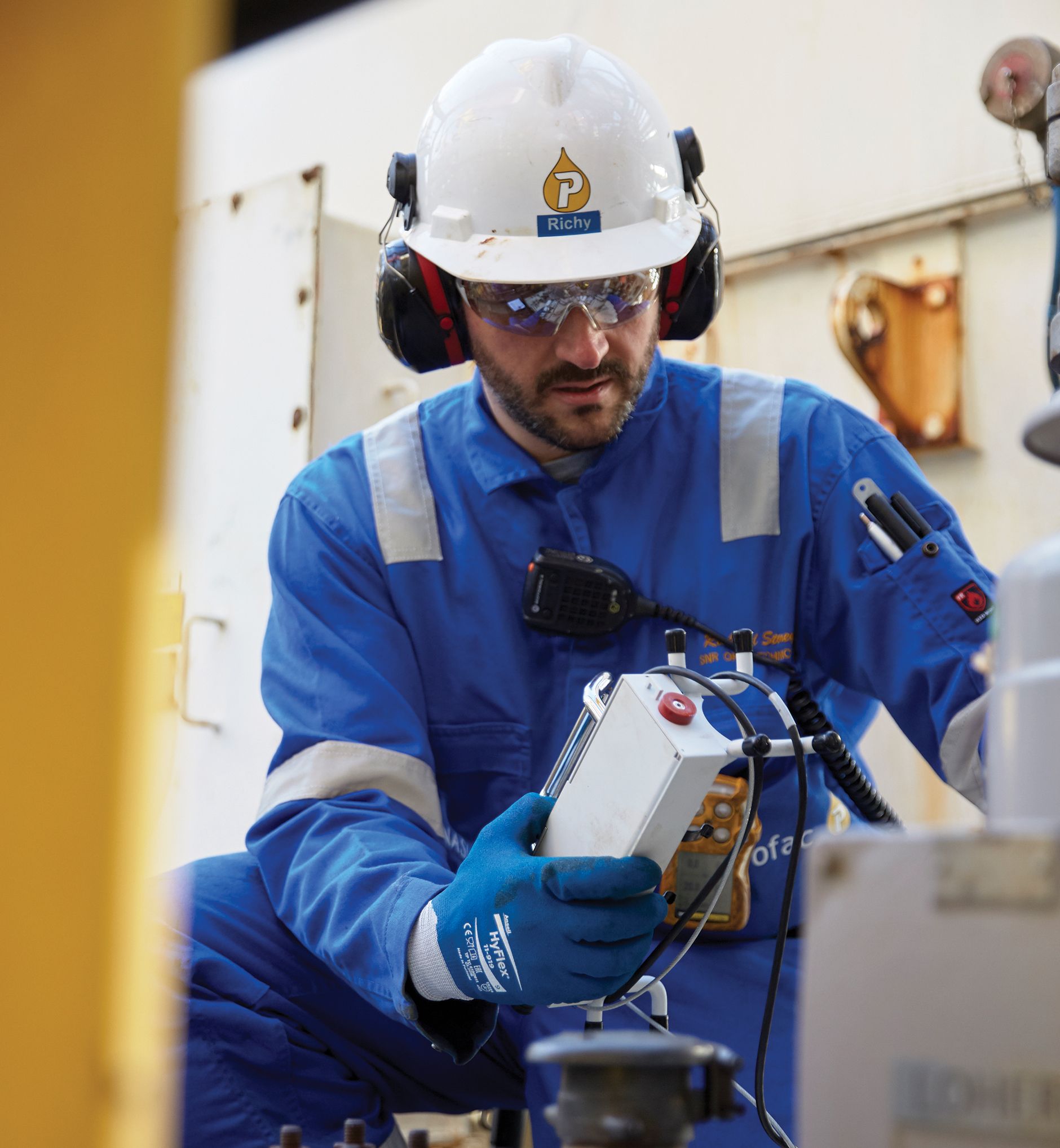
“Clients are coming to us because they want to see innovation.”
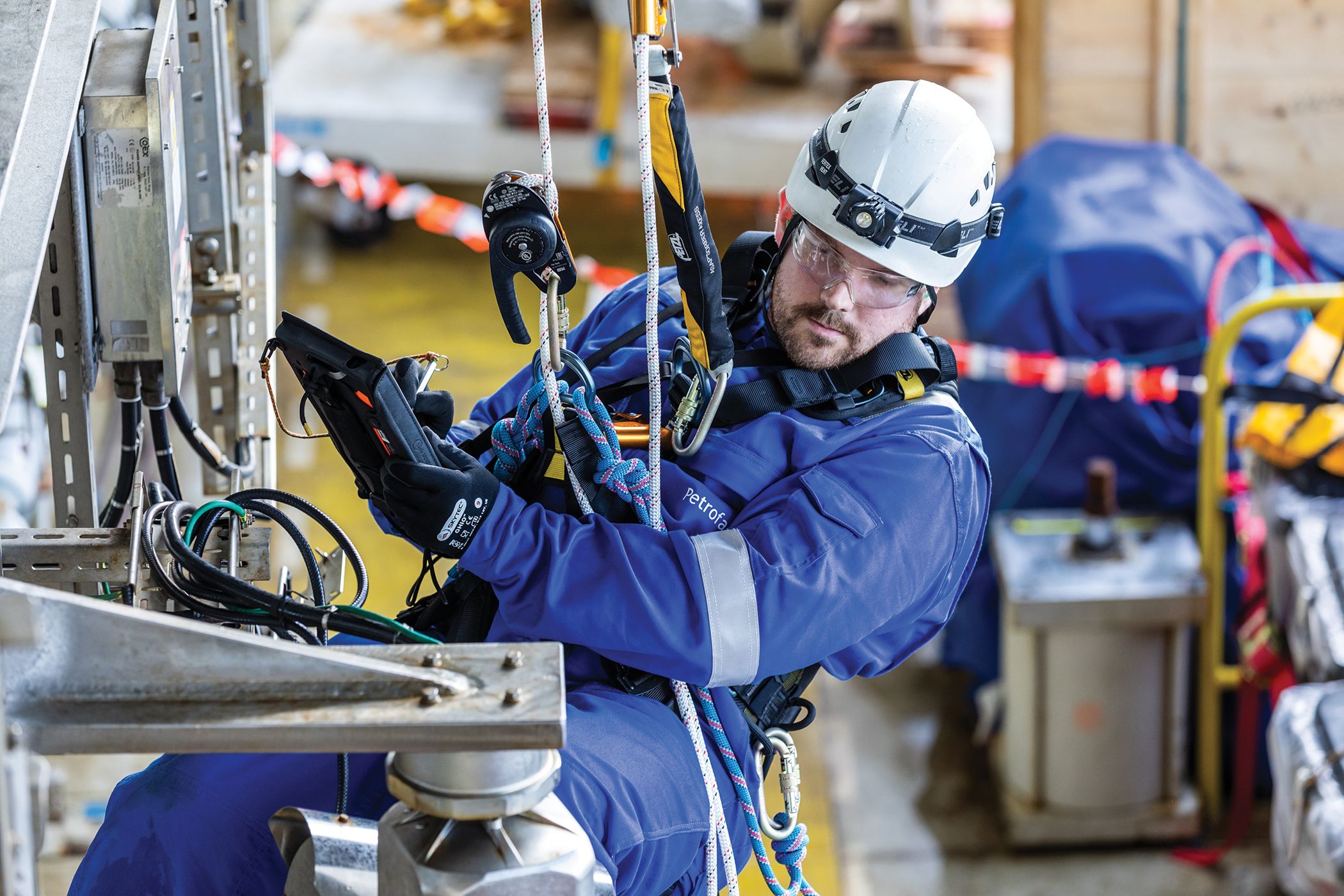
A DIGITALLY ENABLED FUTURE
For those working at the front end of the revolution, the benefits of a digitally enabled future are many. As part of a group-wide incentive to digitalise, 12 projects were prioritised for trial during 2018, and three are already being used or trialled in the UKCS. The first is the Connected Worker model, which uses mobile wearable technologies, including head-mounted cameras and hand-held tablets, to create a direct link between offshore workers and onshore experts.
The second is the Digital Twin, which integrates the 3D visualisation of a facility with engineering information and performance data. The third is Petrolytics, which uses artificial intelligence and machine learning to forecast an asset’s performance and predict potential failures.
The practical and data wins are fast emerging. Greg Thompson is Production Process Engineer for one of the most digitally advanced pieces of the digital jigsaw, Petrolytics. He says: “Everyone has woken up to digital technologies. The overall goal for Petrolytics is to help us improve our up time, so we keep the oil and plant going for longer and optimise our maintenance strategies.”
Greg believes even the most advanced technologies can be rolled out across the older assets over time: “If the data is there there’s no reason why it can’t work on an old, middle-aged or new asset. You can see the problem before it happens. You can plan things more effectively. It helps costs go down and efficiencies go up, so it’s good for production.”
There has also been notable success when the various technologies are used together. Catherine McKenzie is a Senior Integrity Engineer and supports Petrofac’s Innovation Zone – a specially designed space, used to engage clients on the latest technology. Catherine believes the future of the basin lies in digital collaborations, as well as creating something that produces real value for the asset and client. “I sometimes get referred to as the resident cynic,” she laughs, “but there’s no point in having ‘sexy’ technology for technology’s sake. I think if there’s no value to technology what’s the point? But I’ve been totally persuaded by the functionality of the digital approach here. You can actually see that it’s useful.”

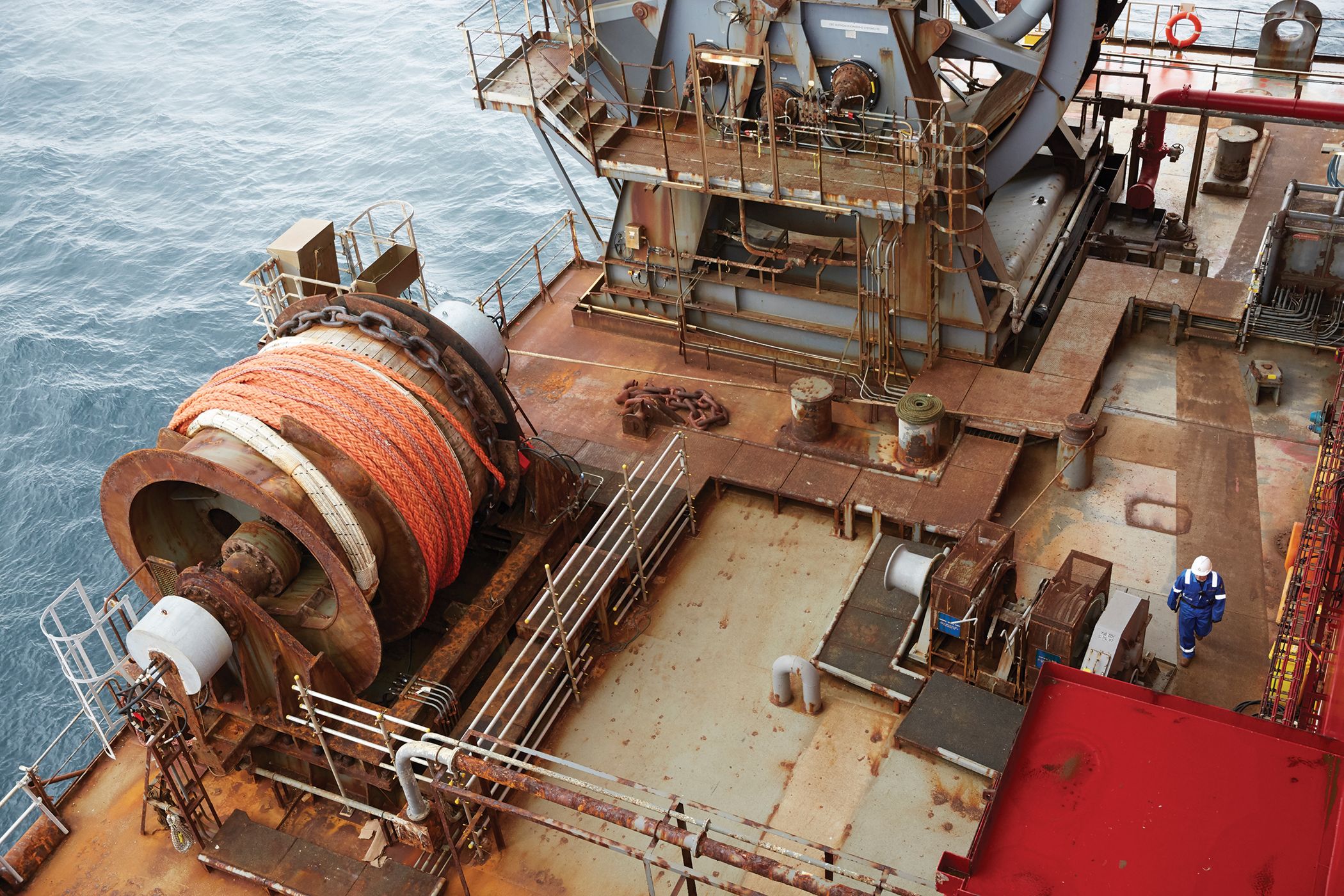
PLATFORMS AND PRODUCTS
As the digital uprising continues, clients are combining their platforms and products with Petrofac’s engineering and operations expertise. Progress has been impressive. ChrisDawson, Maintenance Delivery Lead, has been working alongside colleagues to modernise and digitalise manual execution processes offshore with great success. Having supported the creation of an infrastructure that connects elements of the Connected Worker model to Petrofac’s BuildME™ software, he’s keen to find other uses for this lean, efficient digitalised approach. “Using a defined set of steps,” explains Chris, “we can gather data and make decisions. We can say to clients: this is your risk; this is what we recommend. There are other enhancements too. We can capture data on how long things take, which will enhance planning. We will also be able to apply risk-based inspections.”
Keith Scott, Integrity Management Services Director, who has worked closely with Chris believes it has great potential across the North Sea’s assets. The drive, he says, is to create the best possible value for the client – and ultimately drive the longevity of the basin. “From a client’s point of view, they can see the day-to-day progress offshore. And, because of the methodology, you can use it for almost anything: whether it’s audits, daily rounds offshore, management or safety visits. It doesn’t fail. It’s foolproof. Every asset – young or old – does things in different ways, so it’s about standardising the digital process. If we do this right, we’ve got an enhanced service with technical expertise. It puts us in a different league.”
The ‘wins’ have been many, with up to 200% improvements in inspection productivity now possible through the integration of new technologies. Antiquated paperwork and time-consuming systems have been revolutionised, all at the touch of a button. On a practical level for the offshore team, the benefits are considerable. Where once site inspectors were sent in on ropes to assess the systems and then return to the office to input their findings, the hand-held use of tablets now allows for up-to-the-minute reporting during inspection, with a streamlined operation digitally transferring data to a dashboard collating and finalising reports on shore.
It is technology designed to have a clear purpose, says Calum Rankin, an Instrument and Control Engineer for the Connected Worker strand of technology. Calum has seen first-hand the progress of digital advances when they trialled them offshore in December 2018. “When the offshore workers saw the Connected Worker headset, with its camera and microphone, they all felt it was easy to use and could immediately see the benefits,” he says. During a trial with the technology, Calum saw a real-world ‘win’ for himself when a gas compressor on the platform developed a fault. Using the Connected Worker model, they were able to address the problem in a fraction of the time, sending real-time data and images onshore for swift analysis. “We shut it down and the guy went to work using the headset and was able to record pictures from inside the machine and send them back on shore. They were able to sign off on what was needed, and it was fixed a lot quicker.”
“There’s no point in having ‘sexy’ technology for technology’s sake.”

ONLY THE BEGINNING
Having worked offshore for several years as an instrument technician, Calum believes only good can come from advancing technologies. “We need to design it to suit the needs of each different asset. Digitalisation is overdue: it can only improve everything.”
Iain Heneghan, the Engineering & Integrity Team Lead, who works closely with Digital Twin technology on North Sea asset, Anasuria, agrees the progress has been considerable. “Since the oil crash, industry has been forced into a ‘lower for longer’ operating mode. People are looking for gains in productivity, efficiencies, and value without major investment and that’s where technology has the answer. We are realising some of the benefits of our investments already, but we are at early stages.”
Early reports suggest that Digital Twin could bring a 3-5% reduction in operations and maintenance costs and 5-10% reduction in engineering man-hours. “Two years ago we started making inroads into creating a very basic digital twin which provided a ‘Google street view’ of the asset,” explains Iain. But the Digital Twin, he explains, has evolved over time. “We have been modelling in engineering modifications allowing people to visualise in real space what they will be getting. We are currently working on tying in our anomaly management tool with the Digital Twin, which we believe will increase the quality of the risk assessment and decrease the processing time for each anomaly. The future possibilities are vast from modelling large construction projects to running process simulations. The results we are starting to see are the onshore team becoming more immersed in the physical asset while reducing the requirement to go out there.”
On Anasuria, a more matured Digital Twin is reaping rewards, with a key benefit found in its ability to improve survey efficiency. “It costs a lot of money sending people out to the asset to complete surveys, Digital Twin is reducing these costs and the need for travel. It’s making us more agile and able to respond faster because we have the data at our fingertips.
All of our historical laser scan data has been integrated and aligned to a single coordinate system providing huge value for our engineering teams.” The success of such new innovations can only reap rewards for Vision 2035’s larger goal: that of securing affordable oil and gas while supporting the transition towards lower carbon technology. Whatever the bigger picture, oil and gas will still have a vital role in meeting industry and future energy needs.
Iain believes it’s vital for the older assets and the oil industry going forward to embrace the digital innovations at play: “Technology is key for our life extension programme to take up these initiatives. I don’t think the basin will be successful without it. I think there is a perception that digital technologies will replace jobs, I don’t think this is the case.
I believe it will replace certain work activities allowing people more creative space to do the smart things, for example, stop taking logs and instead reviewing the trends and take preventative actions.”


